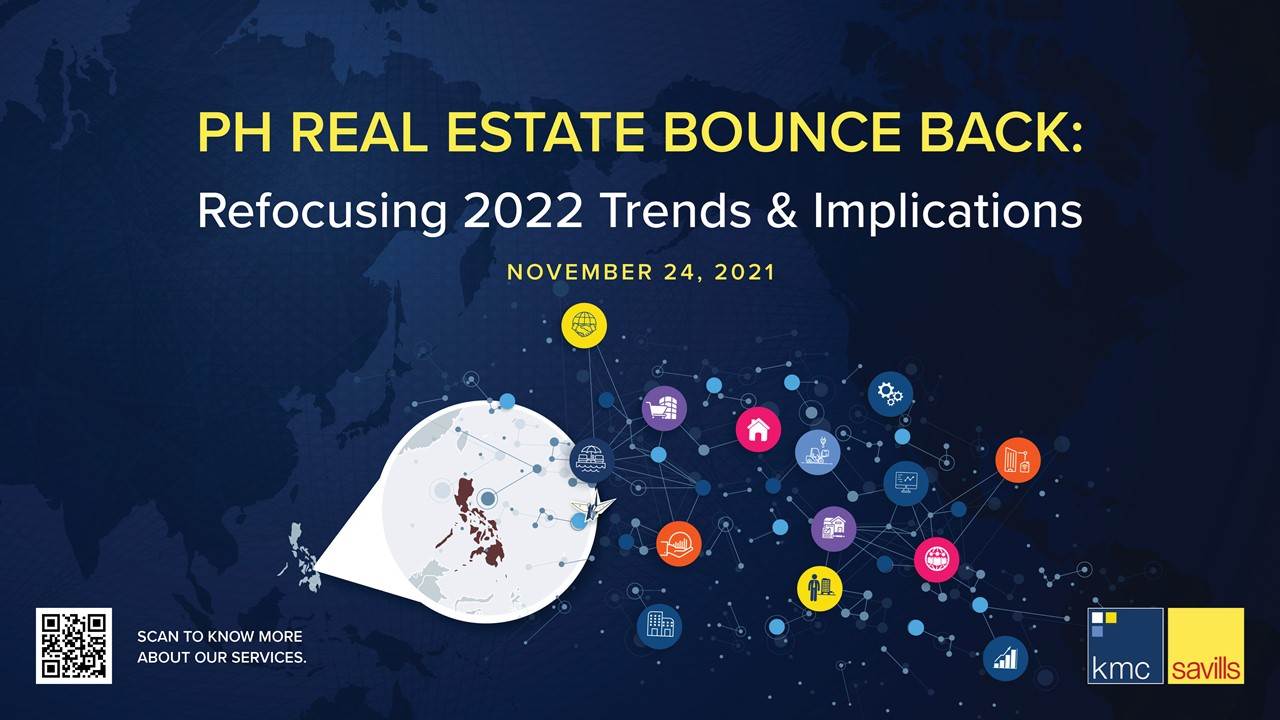
Reading Time: minutes
The Philippine real estate industry is set to bounce back in 2022, leading real estate brokerage & consultancy firm KMC Savills said.
In its year-end webinar, KMC forecasted a better year for business as the Industrial and Logistics sector sustains its growth in the country. Real estate investments and acquisitions are also expected to pick up in 2022, aided by increased foreign investments.
“The pillars of the Philippine economy fared better than expected,” KMC Managing Director Michael McCullough noted. “Except for tourism, the BPO revenue and OFW remittances continue to scaffold the economy throughout the pandemic.”
Data centers as main economic drivers
Senior Director for Industrial and Logistics Services Karen Golez attributed the boom of this asset class to the growing e-commerce market in the Philippines, making up 69% of industrial transactions. However, Golez noted that data centers are overtaking as the main economic driver as the Philippines post as an ideal location in Southeast Asia. This growth is supported by investors decentralizing investment portfolios to focus on information and communication.
“Another big winner in the industrial sector, and I think the most exciting asset right now, are data centers. Over the pandemic, Southeast Asia has become a key region driving global data centers’ growth,” Golez said. “With the accelerated rate of globalization and the expansion of enterprises, we are seeing the effect in the local market as international data center locators look into the Philippines.”
KMC Executive Director for Investor Services Jose Carmelo Porciuncula seconded this and said that local investors who have “saved up” capital during the height of the pandemic consider diving into industrial real estate.
“Investors are currently interested in data centers and telecommunication projects,” Porciuncula added. “More data center facilities will be developed as they anticipate increased activity in this side of the business.”
Hopeful but cautious
As for the ‘more traditional’ real estate asset classes including office, retail, and residential, KMC reported a slight pickup in leasing activity as the government continues to ease restrictions and lift lockdowns.
In 3Q/2021, data however showed that demand remains to be weak as companies and organizations consider decentralizing workforce and opt for more flexible work arrangements including hub and spoke.
“The Ortigas Center CBD is one of the brighter spots for office this quarter,” KMC COO Cha Carbonell, MCR.w shared. “However, overall vacancies remain to be in the double-digit, notably in the Bay Area and Alabang as POGO locators pull out.”
New residential developments still record low launches in 2021, Research Manager Aron Pritchard reported. However, a slight increase in residential prices is observed as of 3Q/2021 as the economy gradually recovers. Pritchard added that the hub and spoke model also influenced an increase in corporate housing and co-living demand, which is anticipated to continue next year.
Mall re-openings in Metro Manila have significantly trimmed retail space vacancies this quarter. The F&B sector continues to cement itself as an integral part of the industry, as sales pick up 31% from 2020. Research and Consultancy Senior Manager Joshua De Las Alas noted that while e-commerce continues to reshape retail, physical stores sustain themselves as Filipinos consider malls ‘social spaces’ not exclusive to shopping.
Overall, McCullough called 2021 ‘a better year’ compared to 2020. “The Philippines remain to be an attractive location for business, especially industrial real estate,” he said. “With more support from the government in terms of infrastructure and ease of doing business, we can look forward to more bright spots in the sector for 2022.”

